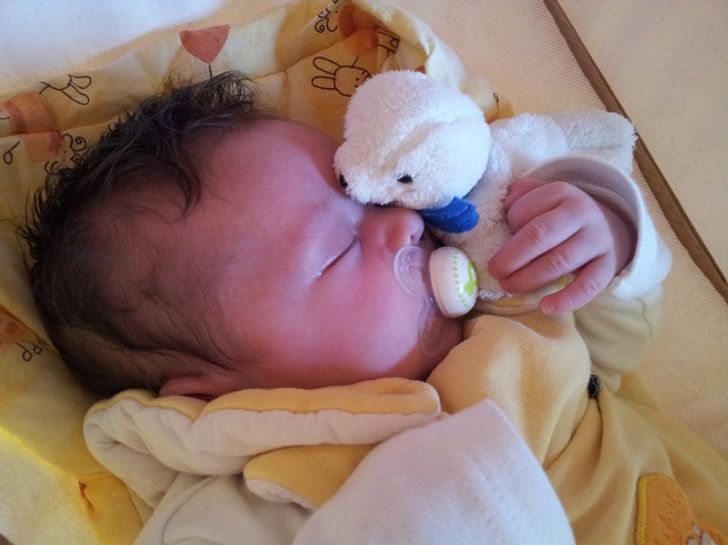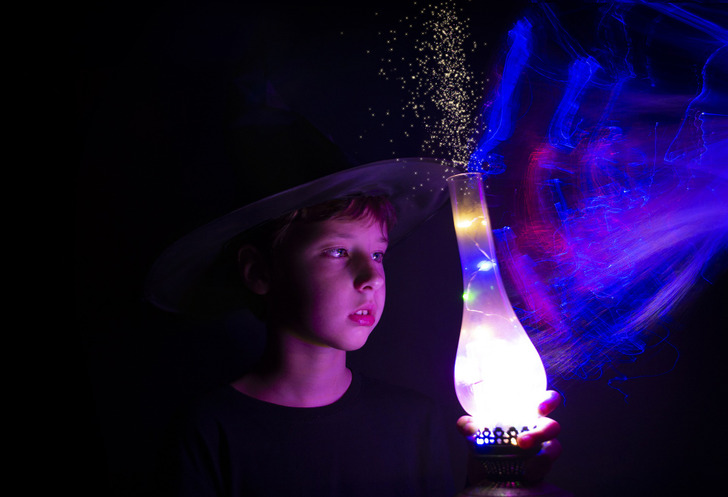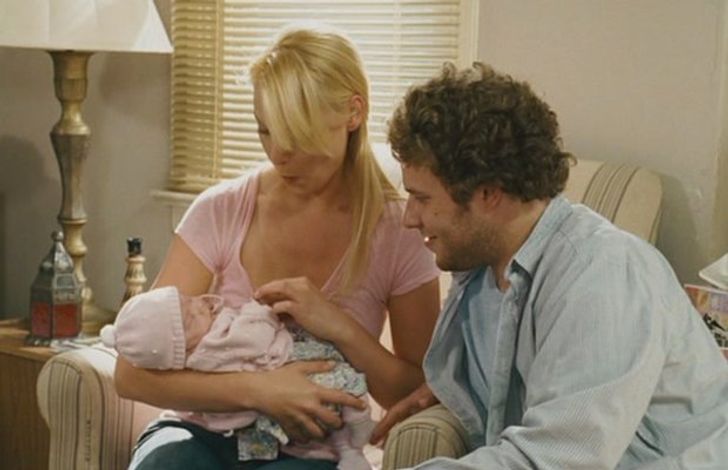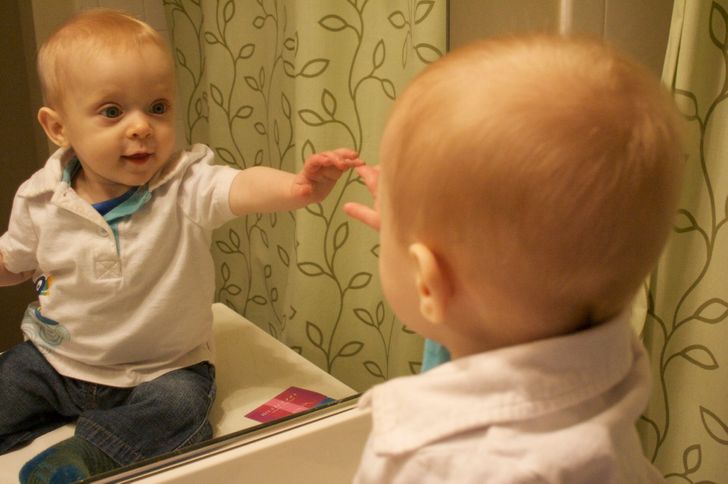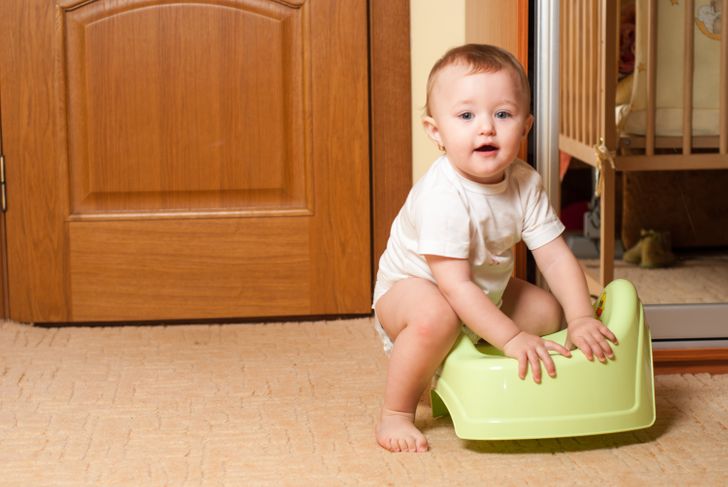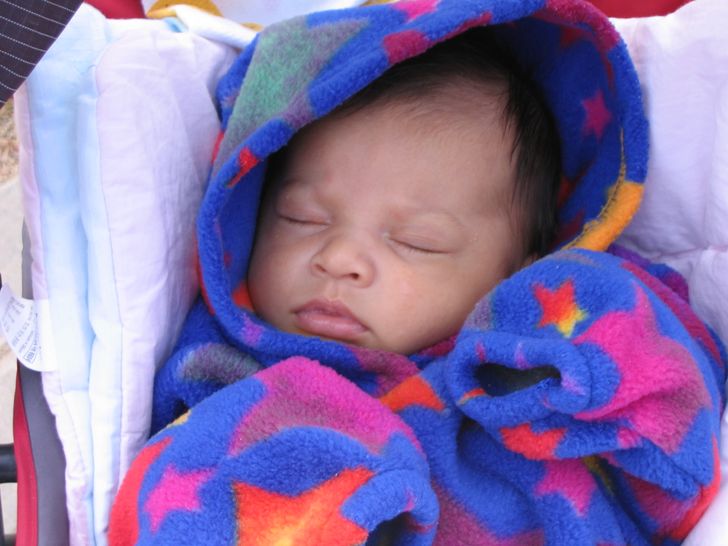nice info
12 Situations Where Parents Hurt Their Children and Don’t Even Realize It
Nowadays, there are so many different recommendations about how to raise children correctly and they are often quite controversial. But doctors and psychologists continue to conduct new experiments, analyze the results, and then make new lists of recommendations. In the beginning, these tips may sound strange, but when you learn more about the details, they turn out to be quite useful.
Bright Side has reviewed the studies about children’s health and made a list of things that are harmful to children, according to experts. And at the end of the article, we added a recommendation for all grandmothers, to help them worry less about their grandchildren.
1. Tickling children
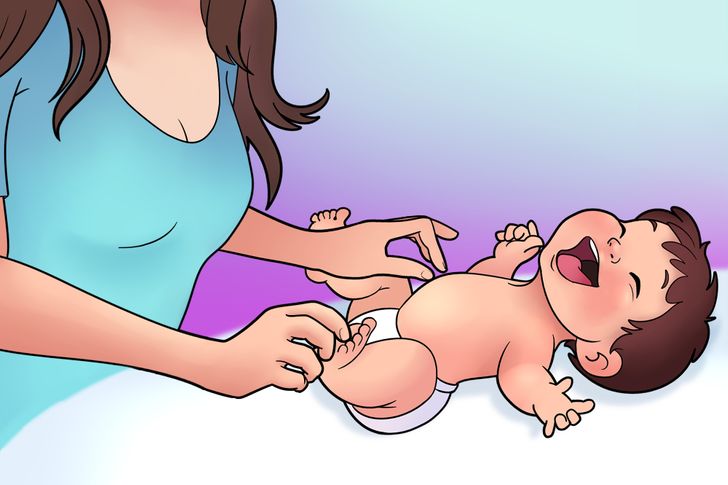
It has happened many times that adults have wanted to make children laugh and so they start ticking them. But a researcher from the University of California found out many years ago, that tickling doesn’t cause the same sensation of happiness as a funny joke does. It is only an illusion of happy laughter.
In this case, children laugh uncontrollably as the result of a reflex. Almost all people laugh when they are tickled. But the problem is, children laugh, even if they hate being tickled.
2. Putting toys in the baby’s bed
Not all parents realize that for good sleep, babies only need a good mattress, a sheet, and a small blanket in case it gets cold in their room. Sometimes, a pillow can be used (a small and flat one). However, according to studies, before a certain age, children don’t need pillows.
Also, children don’t need any special decorations for the area in which they sleep because soft toys, or toys of any kind, can become a problem at any moment. They may wake the child up or even cause breathing problems if the baby accidentally puts their face onto the toy.
3. Using a night-light when your baby is asleep
Leaving even the dimmest light on in a child’s room for the whole night is not a good thing. The growth hormone that is produced while you’re sleeping, is better manufactured by the body in total darkness. The reasons for using a night-light can be different. Most of the time, parents do it for their own comfort: it is easier to change diapers this way. Some moms and dads are just scared of darkness, so they leave the light on to prevent the baby from developing these phobias and they think night-lights can help.
Tracy Bedrosian, a neurologist at Ohio State University, recommends that people who can’t stop using the light should replace it with the right kind of light. Experiments showed that green light moves the biological clock for about 90 minutes and the blue light moves the clock for about 180 minutes, so it becomes much harder to sleep well. The red and the orange light don’t suppress the production of melatonin as much as green, white, and blue light do and don’t disrupt your circadian rhythms.
4. Shaking your baby
Every parent has been in a situation where it was hard to put children to bed without shaking them. Sometimes, this process takes such a long time that moms and dads are already exhausted, but their baby still isn’t.
Pediatricians claim that it is possible to avoid these problems if you teach your baby to follow a sleeping schedule from birth and get rid of any external and internal irritations, like hunger, wet diapers, noise, uncomfortable clothes, and other things of this nature. If you can’t avoid shaking them, make sure you don’t do it for a long time and that your motions are smooth.
5. Hiding mirrors from children because of popular superstitions
There is a popular superstition that warns parents against showing children mirrors because “they might get ill.” This is a really strange concept, according to pediatricians and psychologists from all over the world. Doctor Suzy Green, the founder of The Positivity Institute, recommends that parents play with their children using a mirror because it helps with the development of self-awareness, something that is rare in the animal world.
At different ages, children have different reactions to their reflection in the mirror, but it is always a fascinating and positive experience for them.
6. Creating a sterile environment for children
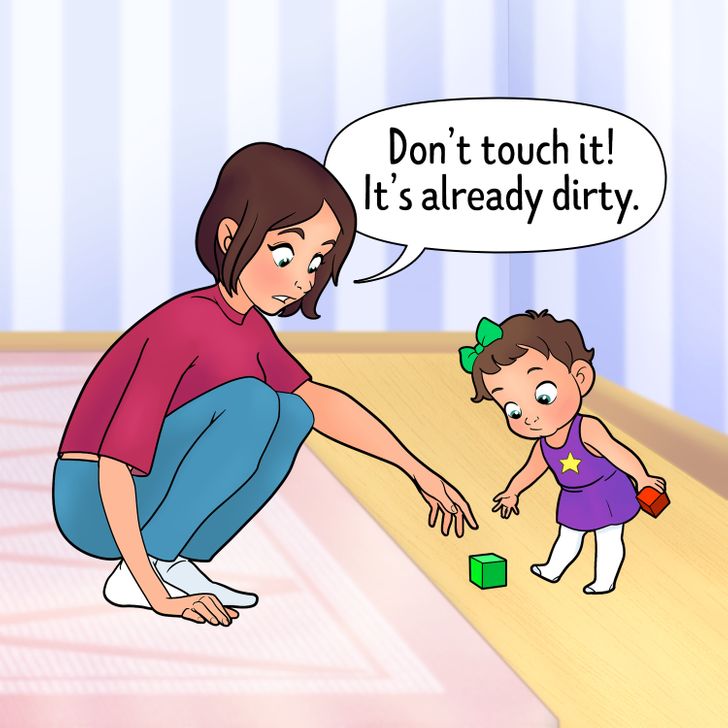
We are used to thinking that cleanliness is extremely important. But researchers from different countries agree that when the environment is too clean, it is bad for the child’s development. Sterile environments slow down the formation of a strong immune system that is ready to fight infections, and they promote allergic reactions like asthma, rhinitis, and atopic dermatitis.
The biggest mistakes that parents make are cleaning the apartment too often and too much and prohibiting their children from coming into contact with pets. The earlier a child deals with a potential allergen, the faster their immune system will learn to treat it as a normal thing.
7. Teaching children to use the potty too early
The potty is a very controversial topic. The most important thing is to not follow the recommendations from people that are not experts. Don’t expect your children to just start using the potty when they are one or one and a half years old. At this age, they still don’t know how to properly react to the signals of their bodies.
Child urologist Stephen Hodges says, “Sooner or later, the child will learn to control their signals. This is when they will start to use the potty. The bladder needs about 3 or 4 years for normal development. Free urination — for example, in the diapers, actually helps the development of the bladder.”
8. Making children finish their meals
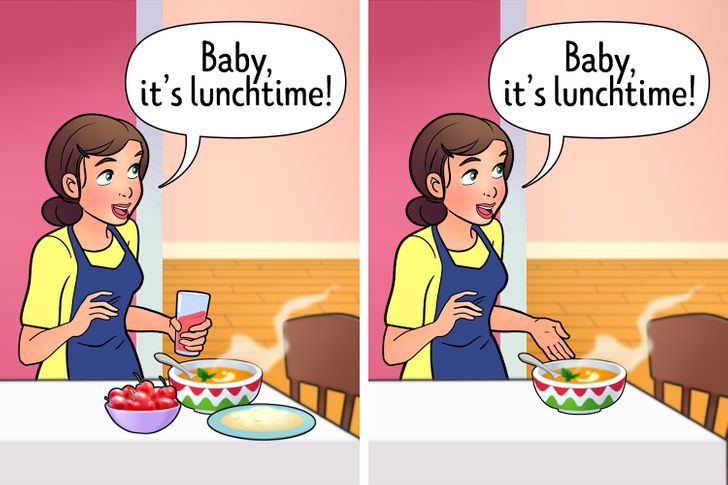
Many grandmothers (and some parents) become really sad when their children don’t want to finish their meals. They start trying to convince the children, blackmail them, or even threaten them. So the plate ends up being clean, but the only people who are happy are the parents.
Few people know that this behavior contributes to the development of bad eating habits. There is no way they can learn to understand their bodies, but they do learn how to overeat.
9. Spoon-feeding
Amy Brown, associate professor of child public health at Swansea University, says that we shouldn’t help children to eat when they can already use a spoon by themselves.
“The children that are spoon-fed longer than they should be, are more likely to have extra weight problems in the future. In the process of feeding, it is hard to tell when the children are full. As a result, they overeat.”
According to researchers, children that eat on their own, have the ability to eat at their own pace and study the taste of the foods, which helps them to develop the right attitude toward food.
10. Protecting children from allergens
Swedish experts claim that in order to reduce the risk of developing an allergy to some foods, parents should limit their children as little as possible when it comes to the foods they eat.
Göran Wennergren, professor of pediatrics at the University of Gothenburg, says, “It is not only not harmful to give children foods with allergens at an early age, but it’s quite beneficial. The immune system learns to react to them properly. A typical example is fish. This is why we recommend giving children crushed fish fillet from the age of 4 months.”
The opinion of the professor was proven by another study that was done recently by Israeli and British scientists. Parents from the Jewish community in London didn’t give their children peanuts and children in Israel tried peanut butter before they were even one year old. Statistics don’t lie: the children from Israel were less likely to have allergic reactions than the children from London.
11. Forcing children to share
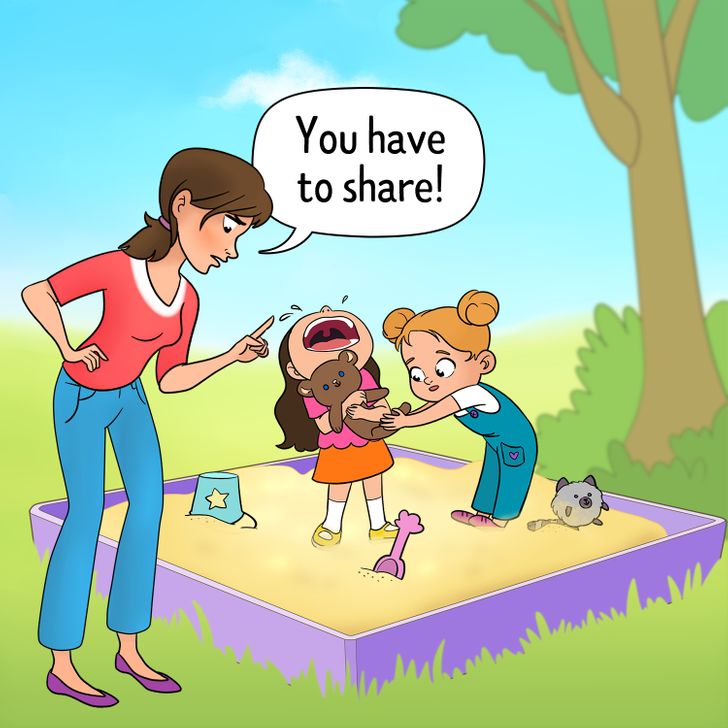
At the age of 2, children start to treat themselves as people and the things they own are perceived as things that belong to them. This is why anyone who wants to take something from a child is treated as an intruder. Unfortunately, very few parents actually understand this. Moms and dads don’t want their children to be seen as greedy people. This is why they might force them to share toys or food.
Psychologists, however, are convinced that by doing this, we raise “convenient” children. They are not able to hear their own desires and they act against their own wishes. In the end, they grow up to be men and women that can’t say “no,” even when it is in their best interests.
12. Wrapping children in clothes when their hands and legs are cold
If the feet, palms, or the nose of a child are not very warm, it doesn’t mean that the child is cold: because of the unique features of blood circulation and vascular tone in children, it is okay for these body parts to be cooler than the rest of the body. The normal room temperature in the children’s room should be between 68°F and 72°F. In these conditions, children don’t need hats, socks, or gloves: the skin should be able to breathe and have contact with the air.
By the way, it is much easier and way more dangerous to overheat a child, than it is to make them cold. The most obvious signs of overheating are a wet neck and the color of the skin, which should be pale pink under normal circumstances. If the skin is overly pink or even red, it means that the baby is too hot and that they need to take off some of their clothes.
Do you think that some of these recommendations are useful? Or should parents decide what is best for their children?
Comments
found it really useful in the areas i myself force my child, vch i will avoid in near future...thnx n keep sharing such useful information...
What? You should never, EVER shake a baby. Seriously, that's extremely dangerous advice. How do you "smoothly" shake a baby? If you meant "bounce" or "rock," then please SAY THAT. "If you can't avoid shaking them"? You can ALWAYS avoid it. Please, please, remove these sentences. Shaking a baby can lead to brain damage and even kill them. NEVER shake a baby.
OMG
Why does it say, "skin...should be pale pink under normal circumstances." ?!!! Don't you know that most of the world's population has brown or black skin? Calling pale pink "normal" is because you've made racist assumptions about normal humans.
??
Related Reads
15+ Animals Whose Genetic Mutations Only Added to Their Charm

11 Honest Illustrations About Women That You Likely Have Way Too Much in Common With
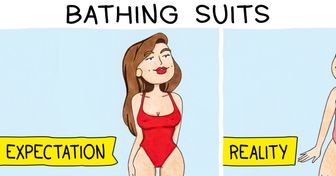
18 Couples Who Are Nailing Family Life Thanks to Their Perfect Sense of Humor

9 Double Standards Women Often Face
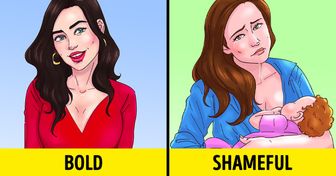
15+ Tweets From Husbands and Wives That Show the Hilarity of Married Life
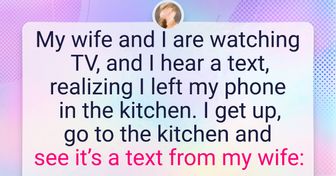
Zac Efron’s Appearance a Few Days Ago Leaves Fans Shocked and Worried

Miley Cyrus Causes a Stir by “Leaving Nothing to the Imagination” as She Wears an Extremely Revealing Dress

Why I Refused to Give Up My Window Seat to a Mother With 2 Children

Model Lost Entire Lips in Pitbull Attack, And She Reflects on Her Recovering Journey

Sharon Stone, 65, Shares a Stunning Bikini Photo, But One Twist Completely Stole Her Thunder

Jennifer Lopez Sparks Controversy After Posting Candid Photos of Ben Affleck

«You Ain’t Got the Body to Pull It Off», Stunning Selena Gomez Deemed Too Big For Her Tight Dress

